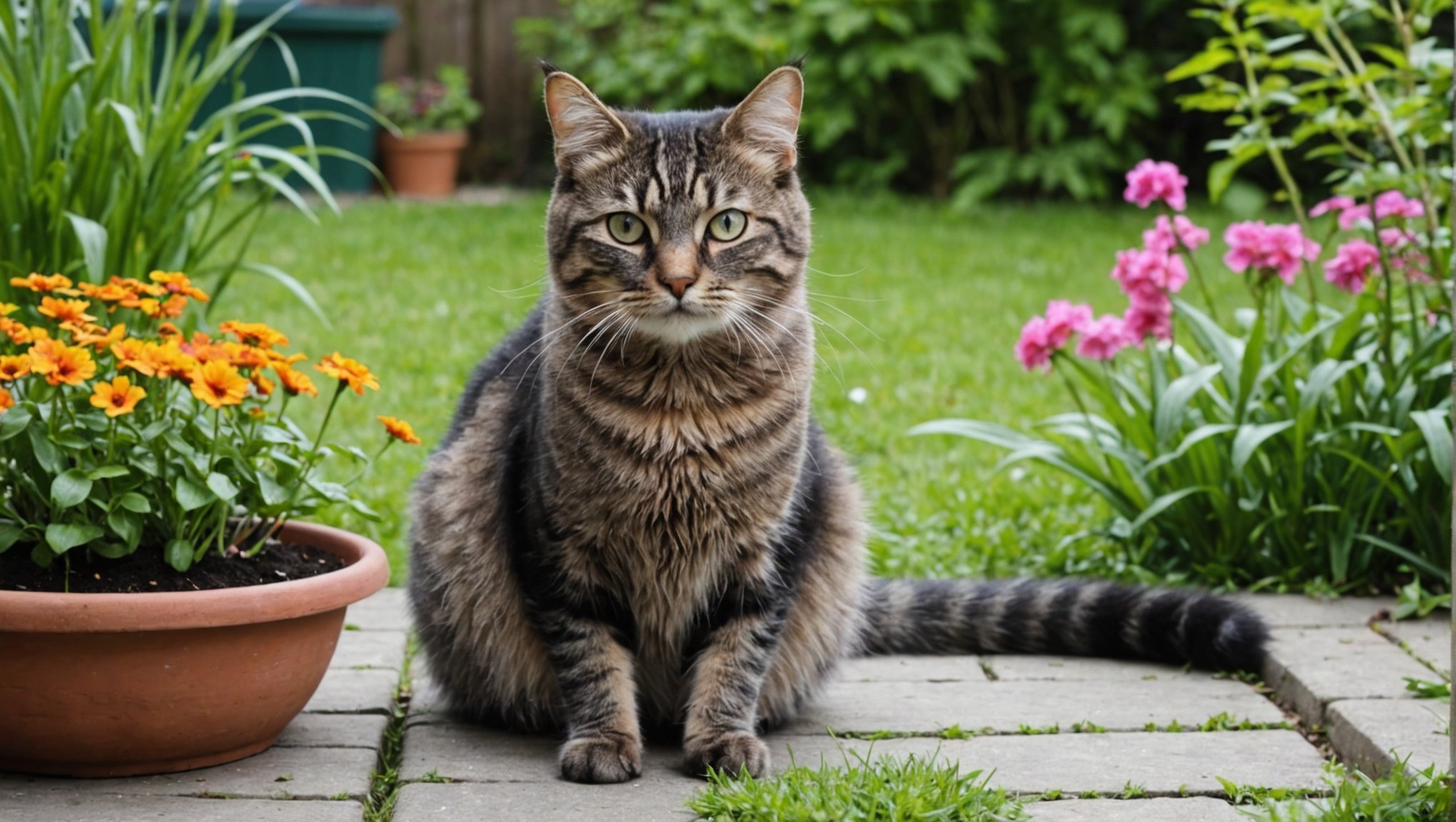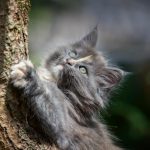Creating a sensory garden for blind cats transforms the outdoor experience into a rich, engaging journey. This space can invoke their natural curiosity, allowing them to experience texture, scent, and sound. Thoughtful design not only ensures safety but also provides mental stimulation. This guide will walk you through essential elements that foster exploration, ensuring your feline friends enjoy the wonders of nature, even without sight. Embrace the opportunity to enrich their lives in a meaningful way.
Understanding the Needs of Blind Cats
Blind cats require specific care to ensure their well-being and happiness. One crucial aspect is sensory stimulation, which compensates for their lack of vision. Sensory gardens can provide a safe and enriching environment, offering various textures, scents, and sounds to engage their other senses. These gardens are essential for blind cats, as they help them explore and interact with their surroundings confidently.
A lire aussi : Ultimate Guide to Caring for Cats with Feline Lower Urinary Tract Disease (FLUTD): Tips for Optimal Wellness
Visually impaired felines often exhibit unique behavioral traits. They rely heavily on their sense of smell and hearing, which become heightened to navigate their environment. Blind cats may appear more cautious and deliberate in their movements, often using their whiskers to detect nearby objects. Understanding these behaviors helps in creating a supportive environment that caters to their needs.
Despite their adaptability, blind cats face several challenges in outdoor environments. They might struggle with uneven surfaces or unfamiliar terrains, which can be disorienting. Ensuring a secure space with sensory garden essentials can mitigate these challenges, providing a stimulating yet safe area for exploration.
Lire également : Transforming Your Home for a Visually Impaired Cat: Safety Tips and Environmental Modifications
By focusing on the specific needs of blind cats, owners can create a nurturing environment that enhances their quality of life, allowing them to thrive despite their visual impairment.
Designing Safe Outdoor Spaces
Creating a safe outdoor garden for blind cats involves meticulous planning and consideration. Ensuring the area is secure and free from potential hazards is crucial for their safety and comfort.
Key Safety Considerations
When designing an outdoor space, focus on cat-proofing outdoor spaces. This means establishing secure boundaries that prevent escape and protect from external threats. High fences or enclosed areas are effective methods to ensure safety. Additionally, it’s important to remove any sharp objects or toxic plants that could pose a risk to your blind cat.
Secure Boundaries and Escape-Proof Areas
To create an escape-proof area, consider using materials like mesh or netting to cover open spaces. These materials allow your cat to enjoy the outdoors without the risk of wandering off. Ensure that gates and doors are always securely closed, and consider installing self-closing mechanisms for added security.
Materials to Avoid
In a safe sensory garden, avoid using materials that might be harmful. Sharp-edged stones, thorny plants, or toxic chemicals should be excluded. Instead, opt for soft, non-toxic plants and smooth surfaces that are gentle on your cat’s paws. By carefully selecting materials, you can create a welcoming and secure environment for your blind cat to explore.
Selecting the Right Plants
Creating a sensory-rich environment for blind cats involves choosing the right cat-friendly plants. This not only enhances their exploration experience but also ensures their safety.
Recommended Plants with Interesting Textures
Incorporating plants with varied textures can significantly benefit blind cats. Consider using sensory plants for cats like lamb’s ear and silver sage, which have soft, velvety leaves that are gentle to touch. These textures can stimulate a cat’s sense of touch, providing a comforting and engaging experience.
Fragrant Plants that Attract and Engage Blind Cats
Fragrance plays a crucial role in attracting blind cats and encouraging exploration. Plants like catnip, valerian, and mint are excellent choices due to their strong, appealing scents. These plants can captivate a cat’s heightened sense of smell, making the garden a more inviting space.
Avoiding Toxic Plants and Ensuring Safety
Safety is paramount when selecting plants for a blind cat’s garden. It’s essential to avoid toxic varieties such as lilies, azaleas, and daffodils, which can pose serious health risks. Instead, opt for non-toxic alternatives like chamomile and rosemary. By carefully selecting cat-friendly plants, you can create a secure and stimulating environment for your feline friend.
Creating Navigable Pathways
Designing garden pathways for cats is essential to support their movement and exploration, especially for blind cats. These pathways should be clear and accessible, enabling them to navigate with ease. By incorporating sensory navigation aids, such as varied textures and scents, you can guide your cat safely through the garden.
Designing Clear and Accessible Pathways
When planning pathways, consider using materials with distinct textures. Soft gravel, smooth pebbles, or grass can help blind cats differentiate between areas. These textures act as tactile cues, enabling cats to identify their location within the garden.
Using Textures and Scents to Guide Navigation
Scents can also serve as effective sensory navigation aids. Planting fragrant herbs like lavender or basil along pathways can create olfactory markers, helping cats orient themselves. These scents not only guide them but also enhance their sensory experience.
Incorporating Natural Barriers and Landmarks
Incorporating natural barriers and landmarks aids in navigation. Low hedges, small fences, or raised beds can act as physical boundaries, preventing cats from straying off the path. These features provide a sense of security and familiarity, allowing blind cats to explore their environment with confidence.
Incorporating Sensory Elements
Enhancing a sensory enrichment garden for blind cats involves integrating various sensory features for cats to engage their senses and enrich their experiences.
Auditory Stimulation Ideas
Sound plays a vital role in a blind cat’s environment. Incorporate elements like wind chimes or rustling grasses to provide gentle, calming auditory cues. These sounds can help cats orient themselves and create a soothing atmosphere.
Taste-Based Experiences with Edible Plants
Creating taste-based experiences is another way to enrich a garden. Include cat-safe edible plants such as catnip, wheatgrass, or parsley. These plants not only offer a delightful taste but also encourage exploration and interaction, enhancing the garden’s sensory appeal.
Varied Tactile Experiences
Utilizing different materials is crucial for varied tactile experiences. Soft surfaces like moss or smooth stones can provide comfort underfoot, while textured elements like bark or gravel offer distinct tactile cues. By incorporating a range of materials, you can create a dynamic environment that stimulates a cat’s sense of touch, making the garden a more engaging and navigable space.
These thoughtful integrations ensure that a sensory enrichment garden is both stimulating and safe, catering specifically to the needs of blind cats.
Enhancing Safety with Features
Creating a secure outdoor design for blind cats involves thoughtful planning and safety considerations. Installing shelters and shaded areas is vital for comfort, providing a refuge from harsh weather conditions. These structures offer a safe haven, allowing cats to rest and feel secure within their environment.
When incorporating water features, it’s essential to consider their safety. Shallow, gently flowing water is preferable, as deep or fast-moving water poses drowning risks. Ensure water features are easily accessible and have gradual edges to prevent accidents. Regular maintenance is crucial to keep these areas clean and safe for your feline friend.
Monitoring outdoor time is another key aspect of cat garden safety features. Supervision ensures that blind cats do not encounter unexpected hazards. By keeping a watchful eye, you can intervene promptly if necessary, providing reassurance and enhancing their confidence in exploring the garden.
Additionally, consider installing motion sensors or cameras to aid in monitoring when direct supervision is not possible. These devices can alert you to any unusual activity, allowing for quick response and ensuring the garden remains a safe and enjoyable space for your blind cat.
Engaging Activities for Cats
Creating engaging outdoor play for blind cats involves thoughtful planning to stimulate their senses and encourage exploration. By incorporating interactive garden ideas, you can transform a garden into a dynamic play area that captivates their attention.
Activities to Encourage Exploration and Play
Blind cats benefit greatly from activities that promote movement and curiosity. Consider setting up obstacle courses with varied textures and scents to guide them. These courses can include tunnels, ramps, and low platforms that challenge their physical abilities while ensuring safety.
Using Toys and Interactive Elements in the Garden
Incorporate toys that make sounds or have distinct scents. Interactive garden ideas may include hanging toys from branches or placing them along pathways. Toys with bells or crinkly textures can attract blind cats, providing auditory stimulation and encouraging play.
Engaging Multiple Senses Through Playtime
To fully engage a blind cat’s senses, incorporate elements that stimulate touch, smell, and hearing. Use scented herbs like catnip or lavender in play areas to offer olfactory stimulation. Additionally, wind chimes or rustling leaves can provide soothing sounds, enhancing the overall sensory experience. By integrating these elements, you create a rich environment that promotes exploration and play for blind cats.
Maintenance and Care of the Sensory Garden
Maintaining a sensory garden for blind cats requires regular attention to ensure it remains a safe and enriching environment. Routine checks are essential for both garden care for cats and plant health. Inspect the garden frequently for any potential hazards, such as broken branches, sharp objects, or toxic plants that may have sprouted unexpectedly.
Routine Checks and Seasonal Adjustments
Conducting routine checks ensures the garden is free from hazards and that the plants are thriving. Seasonal adjustments are crucial to accommodate changing weather conditions. In colder months, consider adding protective coverings to delicate plants to prevent frost damage. During warmer seasons, ensure adequate watering to keep the plants healthy and vibrant.
Keeping the Garden Clean
Regular cleaning is vital in sensory garden maintenance. Remove fallen leaves and debris that could obscure pathways or create tripping hazards. Regularly prune plants to prevent overgrowth, ensuring clear and accessible pathways for your blind cat. This not only keeps the garden tidy but also enhances its navigability.
By focusing on these aspects of garden care for cats, you can maintain a secure and engaging environment that supports the well-being of your blind feline friend.
Sharing Experiences and Tips from Cat Owners
Cat owners who have created sensory gardens often share valuable insights into enhancing these spaces for blind cats. Many have found that incorporating varied textures and scents significantly boosts their cats’ engagement. For instance, one owner noted that introducing soft grasses and fragrant herbs like mint transformed their garden into a sensory haven. Such personal stories highlight the importance of tailoring gardens to individual feline preferences.
Learning from experiences, some cat owners have made modifications to improve their gardens. Adjustments like adding tactile pathways or audible cues, such as wind chimes, have proven effective in guiding blind cats through these spaces. These changes not only enhance navigation but also enrich the overall sensory experience.
For those seeking further advice, numerous community resources and groups exist for blind cat owners. These platforms offer a wealth of cat owner testimonials, providing support and inspiration. Engaging with these communities can lead to discovering new ideas and solutions, ensuring that sensory gardens remain stimulating and safe environments for blind cats. By sharing experiences, cat owners can collectively enhance the quality of life for their visually impaired feline friends.
















